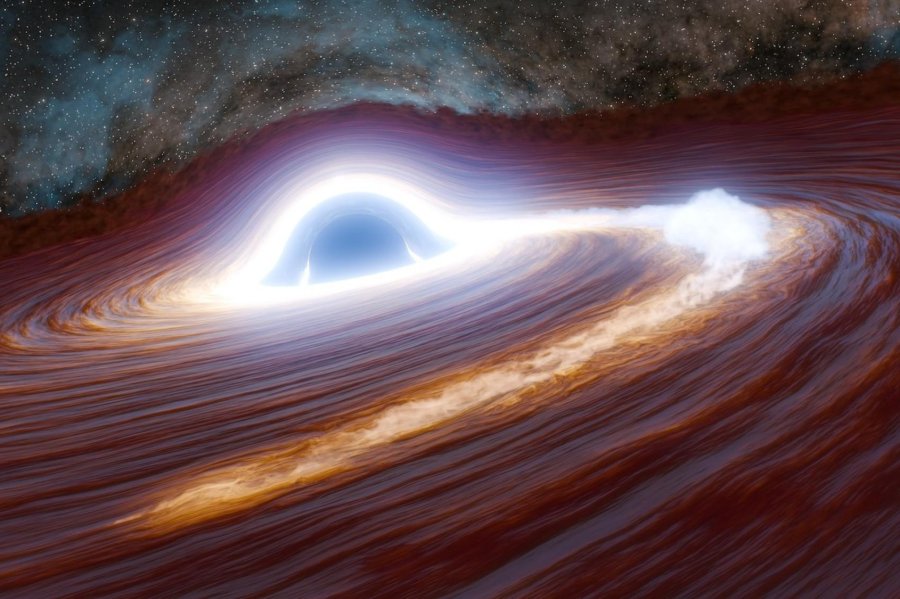Nov. 4 (UPI) — Scientists have discovered a supermassive black hole flare, the largest seen in the universe, and it may be making a meal of an enormous star.
The flare is 30 times more powerful than the previous most powerful active galactic nuclei transient, according to a study published in the journal Nature Astronomy.
“Very few physical events in the Universe can liberate this much electromagnetic energy,” researchers wrote in the study.
While most stars eventually explode into supernovae before becoming black holes, it’s believed that this massive star didn’t make it that far.
The star scooted too close to an enormous black hole, which ate it up, tearing it to pieces, according to the researchers.
The object was first seen in 2018 by the Zwicky Transient Facility at Caltech’s Palomar Observatory, as well as the Caltech-led Catalina Real-Time Transient Survey.
Over the course of several months, the flare brightened by a factor of 40 and, at its peak, was 30 times more bright than any black hole flare seen before — researchers described it as having shone with the light of 10 trillion suns.
The supermassive black hole, called J2245+3743, is an accreting — or feeding — active galactic nucleus.
The black hole is estimated to be 500 million times larger than our sun and is roughly 10 billion light years away.
The researchers said the event likely happened when the universe was young, based on the time it took the light to get to our solar system.
“The energetics show this object is very far away and very bright,” Matthew Graham, lead author and co-principal investigator on the study, said in a press release from the California Institute of Technology.
“This is unlike any AGN we’ve ever seen,” said Graham, research professor of astronomy at Caltech and project scientist for ZTF.
Though it’s now fading, astronomers are still monitoring the flare.
According to Graham, time also runs slower at the site of the flare compared with our own experience of time.
“It’s a phenomenon called cosmological time dilation due to stretching of space and time. As the light travels across expanding space to reach us, its wavelength stretches as does time itself,” he said.
In this case, “seven years here is two years there. We are watching the event play back at quarter speed.”
That J2245+3743 is still happening shows that the star is not yet fully devoured but more like “a fish only halfway down the whale’s gullet,” Graham explained.
The previous record holder for the largest tidal disruption event was nicknamed Scary Barbie.
That TDE, which is also thought to have originated from an AGN, was 30 times weaker than that of J2245+3743, and its doomed star is estimated to have been between three and 10 solar masses, according to the researchers.

